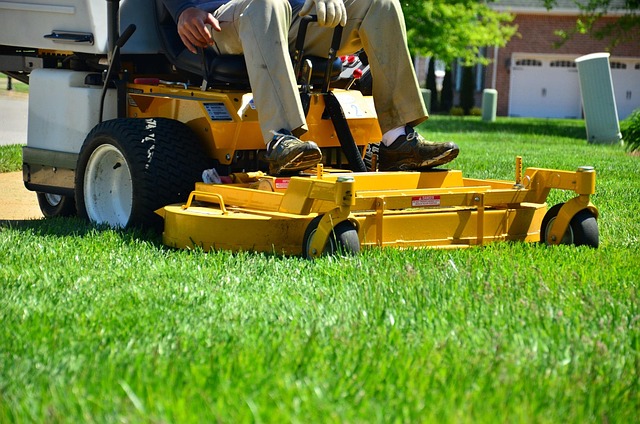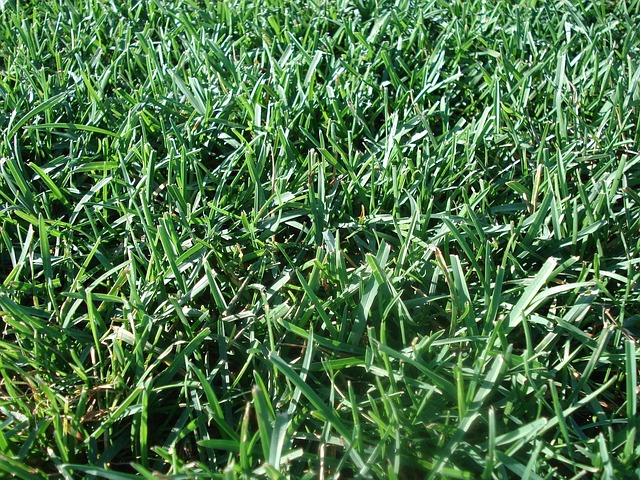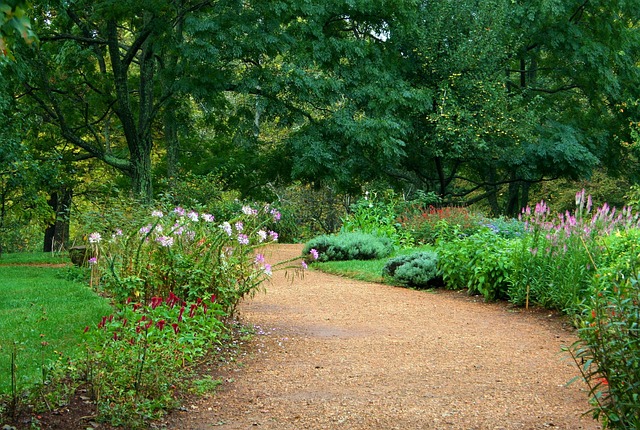Maintaining a lush, vibrant lawn is vital for successful outdoor space design. Effective lawn care involves understanding soil health, watering practices, and pest management. Start with a soil analysis, tailor fertilizer applications based on grass species, and practice regular mowing, aeration, and dethatching. Incorporating these practices ensures your outdoor space stays attractive and balanced, showcasing expertise in lawn care and landscaping. Regular mowing controls weed growth, enhances air circulation, and promotes sustainable ecosystems. Choosing the right fertilizers – organic or synthetic – is crucial for achieving immediate aesthetics while considering long-term sustainability.
“Transform your outdoor area into a thriving haven with our comprehensive guide to lawn care and landscaping. Discover the secrets to lush, green grass through fundamental mowing techniques, fertilizer selection, and efficient watering practices. Explore the art of landscaping design by incorporating native plants and crafting striking hardscapes. Elevate functionality and aesthetics with built-in features like outdoor kitchens, shelters, water features, and sustainable practices. Uncover a world where your outdoor space becomes an extension of your lifestyle.”
- Lawn Care Fundamentals: Nurturing Your Outdoor Paradise
- – The importance of regular mowing and its impact on grass health
- – Choosing the right fertilizers: organic vs. synthetic
Lawn Care Fundamentals: Nurturing Your Outdoor Paradise

Maintaining a lush, vibrant lawn is the cornerstone of any successful outdoor space design. Effective lawn care isn’t just about keeping grass green; it involves a deep understanding of soil health, watering practices, and pest management. To ensure your outdoor paradise thrives, start with a comprehensive soil analysis to determine nutrient deficiencies and pH levels. This guides the application of fertilizers tailored to your specific grass species, promoting robust growth.
Regular mowing, aeration, and dethatching are essential lawn care fundamentals. Mowing at the appropriate height encourages deep root development while reducing stress. Aeration alleviates soil compaction, allowing water, nutrients, and air to penetrate the soil profile. Dethatching removes excess dead organic matter, preventing it from suffocating grass blades and fostering a healthy lawn ecosystem. Incorporating these practices into your landscaping routine ensures your outdoor space remains the envy of the neighborhood.
– The importance of regular mowing and its impact on grass health

Regular mowing is a fundamental aspect of lawn care, crucial for maintaining a healthy and vibrant grass landscape. It helps to control weed growth by preventing them from reaching the sunlight, thus preserving the lawn’s aesthetics and overall well-being. Additionally, mowing promotes better air circulation within the turf, enabling deeper root penetration and enhancing the grass’s resistance to diseases and drought conditions.
Through consistent mowing, you encourage a thick, lush grass growth pattern. This dense vegetation acts as a natural barrier against erosion, ensuring that your outdoor space remains stable and aesthetically pleasing. Moreover, regular lawn care practices, including mowing, contribute to a harmonious integration of the landscaped area with the surrounding environment, fostering a balanced and sustainable ecosystem.
– Choosing the right fertilizers: organic vs. synthetic

When designing and building outdoor spaces, particularly for lawn care and landscaping, selecting the appropriate fertilizers is a key consideration. One of the primary decisions homeowners face is choosing between organic and synthetic fertilizers. Organic options, derived from natural sources like compost and manure, are increasingly popular due to their environmental benefits. They enhance soil health over time by improving its structure and promoting nutrient retention, leading to stronger, more vibrant lawns. Additionally, organic fertilizers release nutrients slowly, ensuring a steady supply that promotes sustainable growth.
On the other hand, synthetic fertilizers offer immediate results, providing quick nutrient boosts to plants. While they may be effective for short-term gains, synthetic options can have drawbacks. They may contain high concentrations of specific nutrients, potentially burning delicate grasses if not used cautiously. Moreover, their environmental impact is a concern, as excessive use can contribute to water pollution and harm local ecosystems. In the context of lawn care and landscaping, understanding these distinctions allows for informed decisions that foster healthy outdoor spaces while considering both immediate aesthetics and long-term sustainability.
Incorporating effective lawn care practices and thoughtful landscaping design is key to transforming your outdoor space into a lush, thriving oasis. By mastering the fundamentals of lawn maintenance, such as consistent mowing and strategic fertilization, you lay the groundwork for a vibrant and healthy lawn. Whether opting for organic or synthetic fertilizers, understanding their benefits allows for informed decisions that contribute to the overall beauty and durability of your landscape. With these practices in place, you’ll be well on your way to achieving a picturesque outdoor sanctuary that becomes the envy of the neighborhood.



